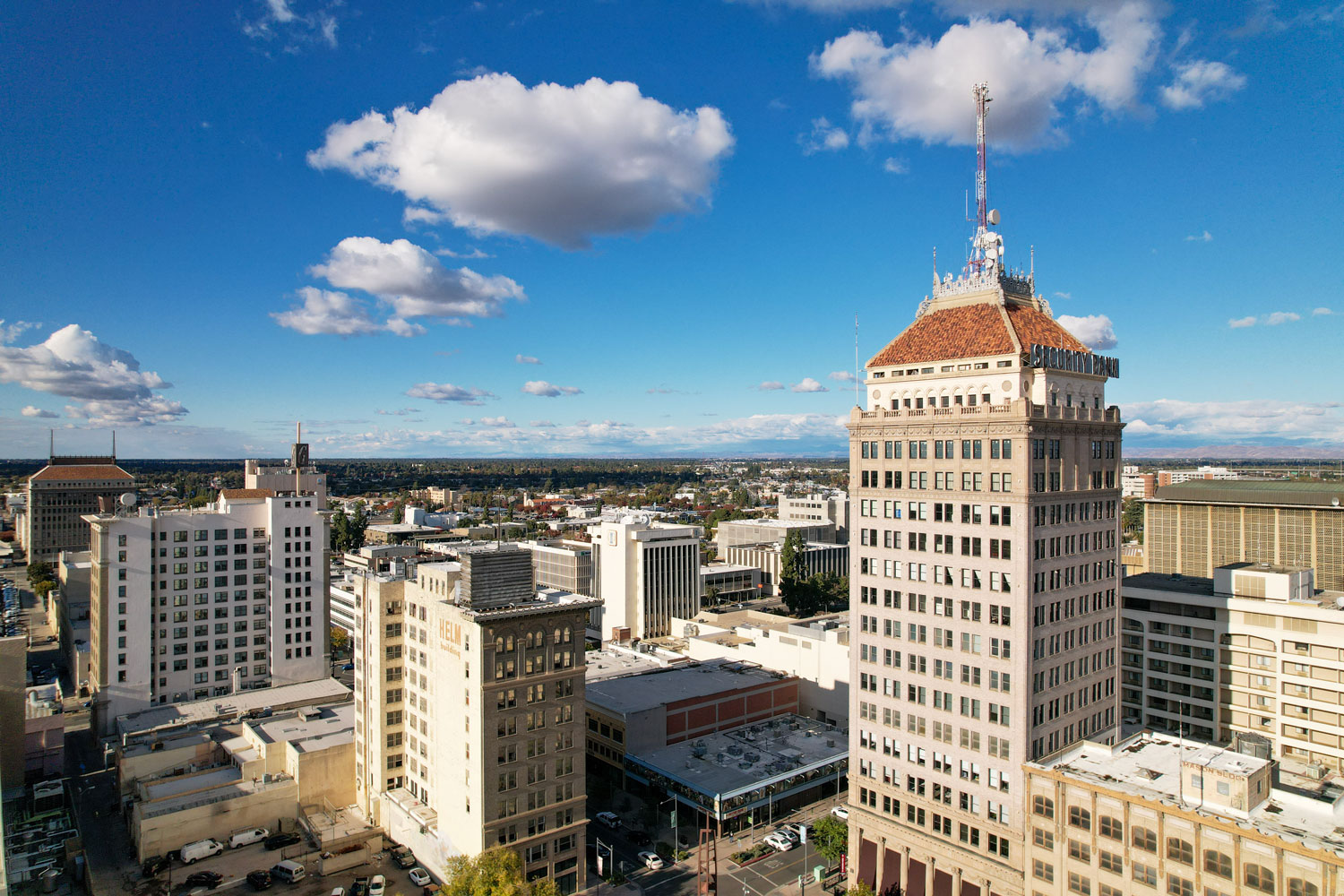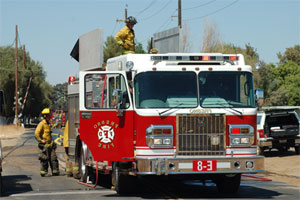Public Safety Education

The Fresno Fire Department provides basic fire prevention-life safety education and the promotes community involvement with the Department through a growing repertoire of in-house programs, and through support and collaboration with outside agency programs. These include: Helmets are Cool, Champ Camp, Fire Explorers, Firefighter for a Day, Girls Empowerment Camp, Ride-Alongs, and 1st-3rd grade assemblies.
Ride-Along Program

Often, citizens wish it were possible for them to be at the scene of fire incidents to see exactly how the incident is handle, so that they may better judge the quality of their fire department. Other are considering a career in firefighting and wish a preview of what such a career might be like. Some would simply like to see “the other side of the coin”.
In response to such feelings among the residents of Fresno, the Fire Department has made it possible for you to “Ride-Along” in a Fire Department unit, with members of the Fire Department.
We sincerely hope that by offering such a program, we may improve the state of understanding that exists between our members and the public.
Please feel free to ask any questions, for it will only be through improved communications with each other that this goal can be reached.
Program FAQ
HOW DO I PARTICIPATE?
Complete and submit an application here. After the form is submitted, our Investigations Unit will conduct a background check. A scheduling coordinator will contact the applicant with notification of the background check status. If passed, then final arrangements will be made for the ride-along.
HOW OFTEN CAN I PARTICIPATE IN A RIDE-ALONG?
Ride-alongs are limited to one per calendar year.
HOW LONG IS A RIDE-ALONG?
Ride-along are generally assumed to be all day, beginning around 9AM after breakfast and ending at 5PM before dinner (or whenever the crew returns from the most recent call over 5PM). They can be limited to two (2) hours minimum, up to 12 hours, subject to the discretion of a chief officer or his designee.
IS THERE POTENTIAL FOR ANY PERSONAL INJURY TO OCCUR?
Firefighter duties are inherently dangerous. Concern by the Captain shall be given to the safety of the participant; however, the utmost importance shall lie in the member’s attention to duty. Should hazardous circumstances present themselves and the opportunity to leave the ride-along at a safe location is available, such an action shall be taken.
WHAT IS THE PROPER ATTIRE?
Casual dress is allowed (i.e., jeans and sneakers, as long as they are in good condition). Closed toed shoes are required.
HOW DOES LUNCH WORK?
The City of Fresno does not pay for any firefighters meals. Fire house food is some of the best around (would you guess many of our firefighters are former chefs!) and participating in a meal with the crew is both encouraged and a general expectation. However, it is therefore expected that participants bring ~$15.00 to contribute to the cost of the meal. Otherwise, participants are welcome to bring a bagged lunch (there are refrigerators availabe for this purpose).
CAN I BRING A CAMERA/USE MY CELLPHONE CAMERA?
Due to Constitutional questions of “Right to privacy”, no cameras or tape recorders are allowed to be used.
DOES A CRIMINAL RECORD PRECLUDE PARTICIPATION?
A criminal record may be cause to have your application denied.
Program Rules
A completed Ride-Along Application shall be submitted at least two (2) weeks in advance of the preferred ride-along date.
Submitting a request does not guarantee approval.
Date, time, and station preferences shall be accommodated when possible.
Participants shall be limited to one ride-along per year. Persons who have never participated in the program shall be given preference over those who have.
All persons wishing to participate in the Ride-Along Program must be at least 18 years of age (16 with parent/guardian permission) and have no warrants outstanding for their arrest.
Participants must have a valid photo id or drivers license with them when reporting for their scheduled ride-along.
Participants shall wear neat, clean, and appropriate clothing. Shorts, sweat suits or jogging suits, tank tops, halter tops, or clothing which is faded, torn, soiled or displays offensive language or symbols shall not be allowed.
Participants shall be considered observers only, and shall be under the direct supervision of the assigned Department personnel during the ride-along.
Participants are to follow the Department personnel’s instruction at all times.
Participants shall conduct themselves in a civil and courteous manner at all times.
Participants must wear their seat belts at all times while in the vehicle.
Participants must remain in the vehicle unless instructed to leave by Department personnel.
The ride-along may be terminated at any time due to emergency conditions or failure to comply with directions of Department personnel.
In the case of a potentially dangerous or hazardous call, participants may be dropped off at a safe location. If this occurs, Department personnel will give the participant specific instructions and arrange for transportation. Please note that this is for the participant’s safety.
Participants must not become involved in any incident Department personnel are handling. This includes discussions of an incident with victims, patients, or witnesses.
No tape recordings, cameras, or similar devices are allowed without prior approval from the Fire Chief or his designee.
For security and safety reasons, participants are not allowed to handle or use any Department or personnel’s equipment or the equipment in the vehicle.
All participants in the Ride-Along Program must read, agree, and abide by all rules and guidelines and complete the Ride-Along Application prior to the ride-along.
Failure to comply with any of the above listed rules and guidelines will result in the immediate termination of the ride-along.++